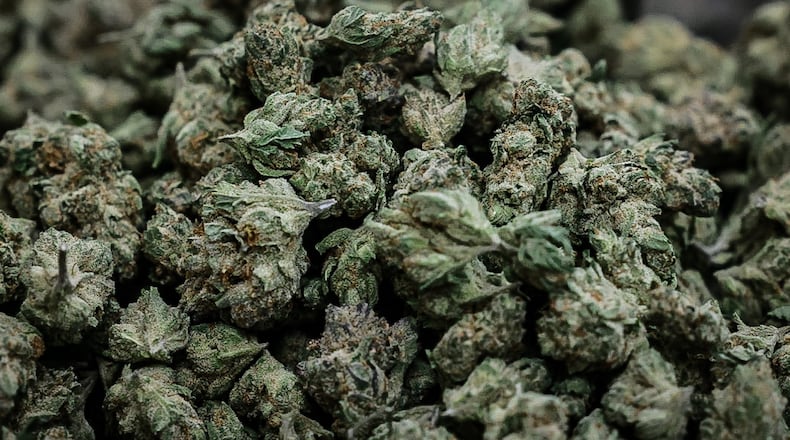“Marijuana is no longer a controversial issue,” said Tom Haren, spokesman for the Coalition to Regulate Marijuana Like Alcohol, which gathered petitions to put the issue on the ballot.“ Ohioans demonstrated this by passing State Issue 2 in a landslide. Ohioans are being extremely clear on the future they want for our state: adult-use marijuana legal and regulated.”
Issue 2 permits adults 21 and over to legally use and grow marijuana, starting on Dec. 7, according to Haren. The new law expands legal use beyond the medical marijuana law approved by the Ohio Legislature in 2016.
Because Issue 2 simply changes state law, and does not amend the state constitution, the Ohio legislature could make changes to it or repeal it.
“With the passage of Issue 2, now is the time for the legislature to lead on how best to allocate tax revenues while responsibly regulating the industry. Investing in county jail construction and funding law enforcement training across Ohio should be our top priority to make our communities safer,” said Ohio House Speaker Jason Stephens, R-Kitts Hill.
>> LIVE RESULTS: Click here tonight for frequently updated election results
Opponents of Issue 2 included public health and mental health advocates, law enforcement, business groups and others. They argued that marijuana poses health threats and that legalizing it will enrich marijuana companies while exposing children to the drug, increasing the chances of crime and workplace injuries, and creating driving hazards.
“It’s a disappointing development but nothing’s over, the venue just shifts from the campaign trail to the Statehouse. Support for Issue 2 fell as Ohioans learned how much it’s rigged to merely benefit a handful of big commercial marijuana companies,” said Scott Milburn, spokesperson for Protect Ohio’s Workers and Families, which campaigned against Issue 2.
“This ticking time bomb crafted in secret by a Columbus law firm will now be cracked open by the legislature in the full light of day so they can defuse it in an open, public process before it blows up in Ohio’s face. It’s a guarantee that wholesale changes await — if not an outright repeal. That would only benefit Ohioans and spare us all a bad case of buyer’s remorse.”
Supporters say marijuana has health benefits, should be regulated like alcohol, and that legalizing it will give access to marijuana to people with medical issues who cannot get a doctor’s permission to use it and will create jobs and tax revenue.
Issue 2 will:
- Allow adults age 21 or older to buy marijuana from licensed dispensaries.
- Allow people to cultivate six marijuana plants at a time, with a limit of 12 per household, without a license. It would be illegal to sell home grown marijuana.
- Expand Ohio’s medical marijuana system, offering licensed cultivators and dispensaries the chance to sell recreational marijuana, and also offering licenses to new applicants, including through a social equity and jobs program.
- Prohibit advertising to minors and mandate setbacks to keep recreational dispensaries away from schools.
- Tax each purchase at 10%. That money would be split 3% to cover regulatory efforts; 25% toward a substance abuse and addiction services fund; 36% toward a fund to create loans, grants and technical assistance to minority or disadvantaged business owners in the industry; and 36% toward revenue for local governments where recreational businesses exist.
Haren said the 36% share of marijuana revenue that would go to the social equity and jobs fund will be administered by the Ohio Department of Development, which can set rules for allowing someone convicted of criminal offenses to apply for a license to grow or sell marijuana.
But Haren said it also has broader social equity goals to award licenses based on the wealth of the business owner, location in areas of high unemployment, race, gender and disability status. And he said that money also would be used “to study and fund criminal justice reform proposals and ways to correct the injustice of marijuana prohibition.”
Ohio voters in 2015 soundly rejected a constitutional amendment legalizing recreational and medical marijuana. But in 2016 the Ohio Legislature legalized medical marijuana in a bill that allowed it to be used for specific medical conditions under a highly regulated system. That law prohibits growing marijuana at home.
The Associated Press contributed to this report.
Follow @LynnHulseyDDN on Facebook, Instagram and X.


